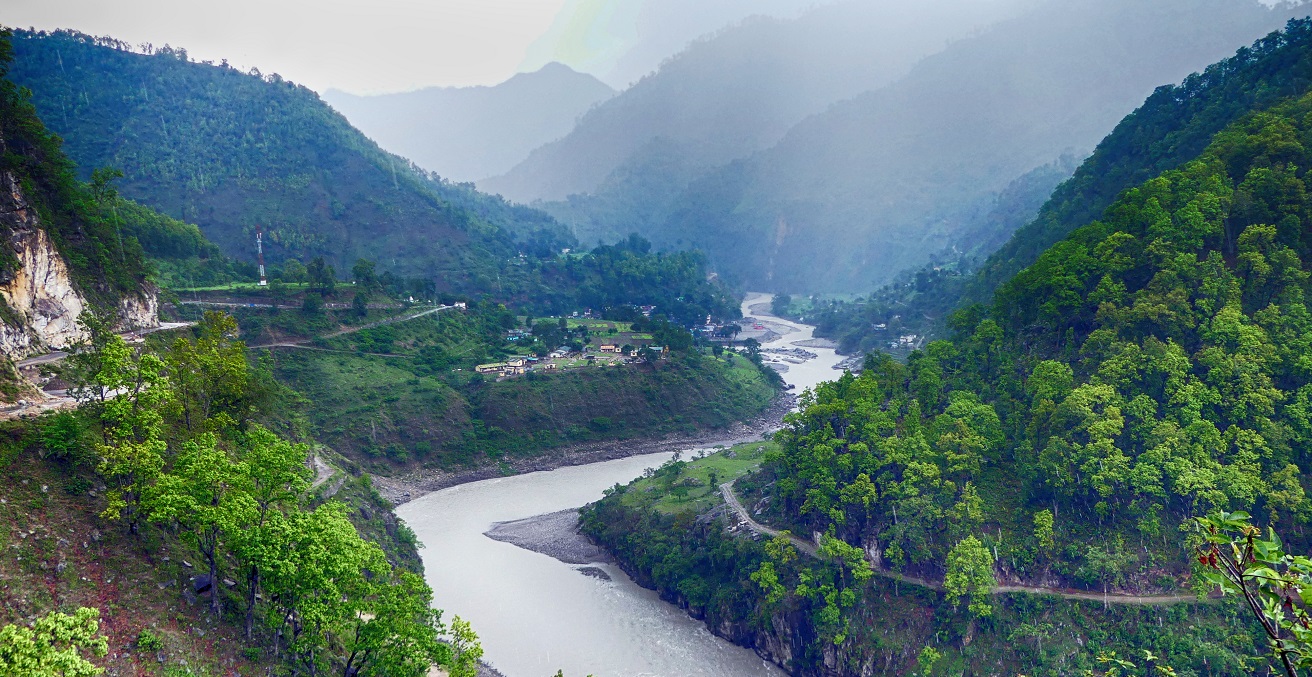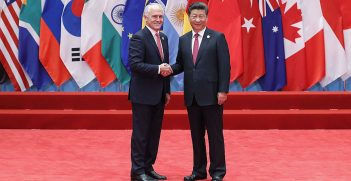Indo-Nepal Border Dispute and Myths of International Relations

In the past few weeks in Nepal, a border dispute with India regarding a small strip of land in Lipu Lek has displaced COVID-19 as an overriding national concern. But the Lipu Lek fiasco is just the latest episode in a series of disputes over a historically contested territory.
The dispute has evoked widespread interest and passionate discussions. Lipu Lek is a strategically vital land that is situated on Nepal’s border with China and India and known as an ancient route for traders and pilgrims transiting between India, Nepal, and Tibet. The streets in Kathmandu, otherwise empty and desolate because of the lockdown, have experienced sudden burst of demonstrations against the Indian decision to build a track running through disputed Lipu Lek to Kailash-Manasarovar, a holy place for Hindus. While mainstream media have enjoyed a welcome distraction from monotonous COVID-19 reports to stoke up jingoistic sentiments implicating celebrities, netizens have taken to social media to engage in vigorous protests and heated debates.
Much has been written on the historicity of the issue, contemporary developments, and their geopolitical implications. This piece, however, seeks to unravel the three fundamental myths of International Relations associated with this Indo-Nepal territorial dispute in terms of three realist concepts: power, state-centrism, and sovereign borders. First, the powerful state/weak state binary is not as simple as it seems from the outset, even when it comes to an intractable territorial dispute. Second, the relationship between Nepal and India is not static, and this dynamism is often driven by its “people.” Internet access and social media have changed the face of activism, reshaping various dimensions of the Indo-Nepal relationship. Finally, the Eurocentric understanding of states with fixed borders, sovereignty over the population inside, and an international community outside needs a serious rethink.
The Nepalese government issued a new political map on 18 May placing the disputed territory of Kalapani within its borders. This came as a response to the inauguration of a Jeep track through Lipu Lek by the Indian Defence Minister Rajnath Singh on 8 May as the shortest route to Kailash-Manasarovar. Insinuation by Indian Army chief Manoj Mukund Naravane that Nepal acted at Chinese behest added fuel to the fire. It is important to note here that Nepal had objected to an agreement between India and China in 2015 to boost bilateral trade through the Qiangla/Lipu Lek pass as it was not consulted. Nepal maintains that this territory belongs to Nepal because the 1816 treaty between British India and Nepal delineates the westernmost border of Nepal as the Kali River up to its source in Limpiyadhura. India argues that the river indicated in the treaty is a small rivulet, thus pushing India’s current territory east of the Kali River. During the Indo-Chinese border war in 1962, in addressing Indian security concerns, Nepal allowed India to install 18 military posts across the Nepalese border with China. Long after the war ended, a small Indian army garrison is still based to the east of the Kali River, despite repeated requests to withdraw from subsequent Nepalese leaders.
The power calculation is woefully insufficient, if not completely irrelevant, to understand the current Indo-Nepal border dispute. Might is not always right, as asserted by the Athenian general in mythical Melian dialogue. Imposing might hurts everyone and can even be counterproductive, bringing many unintended consequences. The astronomical costs, both material and human, of the wars in Afghanistan and Iraq offer much substance to this claim. In 2015, India imposed a five-month blockade on Nepal, precisely at the time when the country was reeling from the devastating earthquake. This blockade was employed as a tool to put pressure on Nepal after it did not follow an Indian directive in constitution-making. This act prompted unity among the political forces in Nepal. The most damaging impact, however, was an indelible imprint in the Nepalese conscience that India cannot be trusted at the time of crisis despite the narrative of “special relationship.” As a consequence, it opened the door for China in Nepal. Nepal went on to sign Protocol on Implementing Agreement on Transit and Transport and six other agreements with China, giving Nepal access to seven Chinese sea and land ports.
Similarly, focusing only on a cold power calculation, disregarding the emotions and sentiments of the people, fails to recognise the dynamic nature of the Indo-Nepal relationship in the 21st century. The cumulative anger of the Nepalese people over border encroachment by India is palpable and has expedited a rare unity among political parties, people, and the Nepalese diaspora. Another crucial factor that has galvanised Nepalese sentiment against India’s action is internet access. Internet activism has intensified so much so that Nepali and Indian hackers have attacked websites, including Nepalese government websites, over the boundary issue. Internet access and social media activism were crucial in pressuring the Nepalese government into action against the infringement, even though the country is under the strict lockdown. It is significant that Nepalese leaders were content to avoid the difficult border talk with India for decades and kept using the map that did not include Limpiadhura-Lipu Lek stretch. However, the availability of information on the internet regarding historical documents and maps and international norms and law, coupled with intense social media activism, forced the government to act swiftly. People and their voices do matter, and their voices have become louder over the internet, urging India to be a responsible power in the neighbourhood before it sets its sights on its ambition to become a global power.
Finally, the way we internalise state and sovereignty must change if we are to accurately map Indo-Nepal relationship in the light of recurrent border dispute. The Montevideo Convention on the Rights and Duties of States (1933) lists four criteria of statehood: population, territory, government, and internal/external legitimacy. The population it envisions is bounded and static within borders. Nepal and India have much in common: history, culture, language, and religion. An open border arrangement after 1950 Indo-Nepal Peace and Friendship Treaty (article 7) allows free movement of people between the two countries, which defies the realist logic of impenetrable borders. People in can work in either territory without work permits. While up to 1.5 million people work in India’s informal economy, Nepal provides employment to hundreds of thousands of Indian workers from neighbouring Indian states. More than half of the population of the district of Darchula, where disputed Lipu Lek and Kalapani are located, live in abject poverty. For many of them, their livelihoods are across the border. In the adjacent villages of Lipu Lek and Kalapani, people rely on India for transportation and supplies. Moreover, Indian security forces in the areas supply them food when they go hungry. The realist fixation on state-borders fails to pay attention to the human security.
While the perennial myths of International Relations aren’t helpful in finding solution to the Indo-Nepal border, avoiding dialogue isn’t fruitful either. Nepal and India are capable of overcoming their misunderstandings through dialogue, as they have repeatedly done in the past. What they also need to overcome is the dictates of Eurocentric realist understanding of International Relations in favour of respectable and productive dialogue and diplomacy.
Keshab Giri earned his PhD from and is now the postgraduate course coordinator and an academic tutor in the Department of Government and International Relations at the University of Sydney.
This article is published under a Creative Commons Licence and may be republished with attribution.





